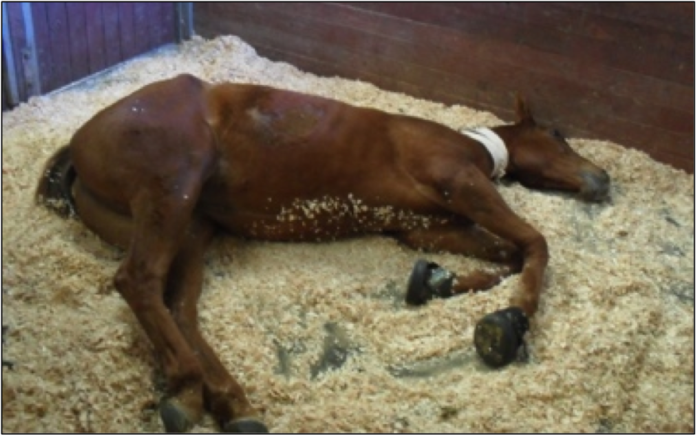Lead researchers discuss findings linking neuropathic pain to endoplasmic reticulum stress
Following a discovery that could benefit millions worldwide, UC Davis researchers are making strides in developing a drug to more efficiently address neuropathic pain.
According to the American Academy of Pain Medicine, about three to four and a half percent of people around the world suffer from neuropathic pain, a chronic pain that results from nerve damage. Neuropathic pain is a common result of conditions like diabetes, HIV and herpes which can lead to nerve injury or nerve cell death.
“If you fall and hurt yourself, that type of pain is not usually neuropathic or chronic,” said Ahmet Bora Inceoglu, a lead researcher at the UCD Department of Entomology and Nematology and the Comprehensive Cancer Center. “But if there is an underlying nerve damage, such as if you lost a finger or a limb, the type of pain that occurs is constant and doesn’t fully get treated by a lot of the drugs that are available.”
Neuropathic pain is different from inflammatory pain in duration—the treatment is not quite as simple.
“You’ve probably experienced inflammatory pain, pain associated with the flu or joint pain, pain that is resolved quickly and can be speeded by taking an aspirin,” said Bruce Hammock, a distinguished professor at the UCD Department of Entomology and Nematology and the Comprehensive Cancer Center. “Chronic pain and neuropathic pain are used interchangeably. Neuropathic pain goes on for longer periods of time and is unforgiving, unrelenting, impractical and could go on for life, [and] options tend to have many side effects.”
While working on drug candidates for inflammatory pain in the Hammock Lab, researchers discovered that the compounds blocked inflammatory pain as expected, but surprisingly also blocked neuropathic pain with great efficiency and displayed none of the side effects common neuropathic pain treatment drugs exhibit.
“No one knew why the compounds we were working on also blocked neuropathic pain,” Hammock said. “That’s when I ran into Fawaz Haj, whose expertise is endoplasmic reticulum (ER) stress. Working with [Haj], we found that a number of the various diseases that the inhibitors worked on all seemed to be related because they all had in common ER stress.”
The endoplasmic reticulum is an organelle in the cell with multiple functions, including protein transportation. ER stress occurs from an imbalance between the cell’s demand and export of proteins.
“The ER is basically where the proteins are made and transported toward the outside of the cell,” Inceoglu said. “ER stress is when the capacity of the cell cannot meet the demand of the proteins. The ER starts to control the problem by taking a few measures.”
Earlier, in the Haj lab, researchers discovered an association between diabetic pain and ER stress.
“The molecular mechanism underlying neuropathic pain remains largely unresolved hindering targeted therapeutic interventions,” said Fawaz Haj, professor at the UCD Department of Nutrition, Department of Internal Medicine and co-director of the Endocrinology and Metabolism Core. “Uncovering endoplasmic reticulum stress as a significant contributor to neuropathic pain aids in developing strategies for targeted therapies.”
While other studies examined ER stress in terms of weeks, months or even years, the Hammock Lab looked into the immediate early stages. Researchers examined diabetic animals suffering from neuropathic pain. It had already been discovered that diabetes caused ER stress, but researchers realized the nerves of the diabetic animals were also stressed.
“ER stress was not known to be associated with pain but it is known to be associated with several diseases like diabetes, Alzheimer’s and Parkinson’s,” Inceoglu said. “In all these conditions, due to one reason or another, the endoplasmic reticulum of the nerve cell is overloaded. What was interesting for us to see, different from everybody else’s work, is that this is happening within a scale of seconds to minutes regarding pain.”
This allowed researchers to consider whether ER stress was related to neuropathic pain, especially since the diseases their compounds seemed to work on all shared ER stress.
“When we induced ER stress, there was an immediate, painful response,” Inceoglu said. “When we blocked ER stress, there was an immediate cessation of pain. This discovery allows exploration of targets of ER stress pathways so other labs can try to develop drugs to treat pain. This predicts more than a dozen targets that were never thought of as pain targets.”
The compounds used in this research were from a drug that is used for a different, unrelated condition. This means the drug is already FDA approved, and medical doctors are able to initiate clinical trials to repurpose the drug.
“Now we have this mechanism for chronic pain and a compound that we are trying to move into chronic pain treatment,” Hammock said.
Hammock has been working with the veterinary school at UCD to develop drugs for companion animals, and results have been successful so far. Hammock predicts the drug will first hit the market in horse treatment since researchers have already successfully treated eleven horses at UC Davis. This included one case of a horse suffering from laminitis and unable to walk, and with successful treatment, regained the ability to walk.
Researchers are currently looking at a 40-dog study, and hope to make the drug available for use for animals as well as people. A clinical double-blind crossover trial in India for people with severe and crippling diabetic pain also yielded very positive results with a topical administration of the drug.
“One goal is to get the drug to patients, whether cats, dogs, horses or people,” Hammock said. “We’re also trying to develop an oral drug to go along with the topical drug.”
With one drug already FDA-approved, a topical drug being perfected and an oral drug on the way, things could be looking up for patients with neuropathic pain.
Photos courtesy of Bruce Hammock & Kathy Garvey.




